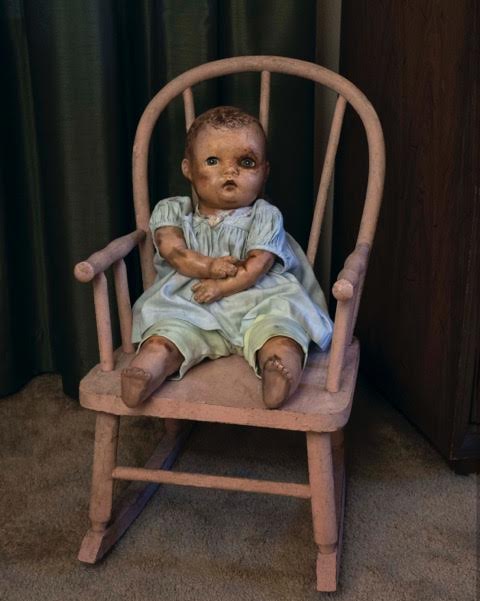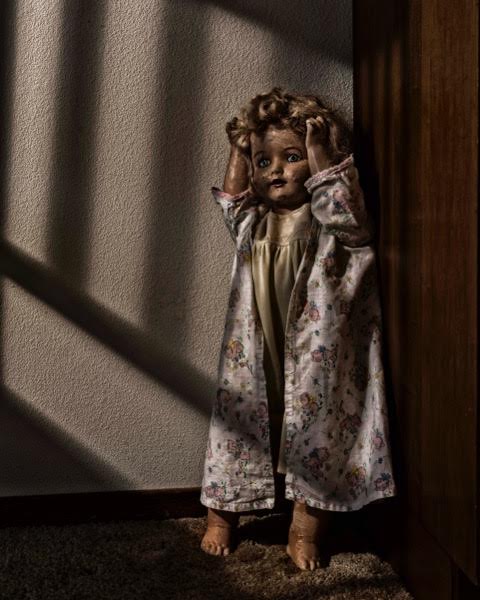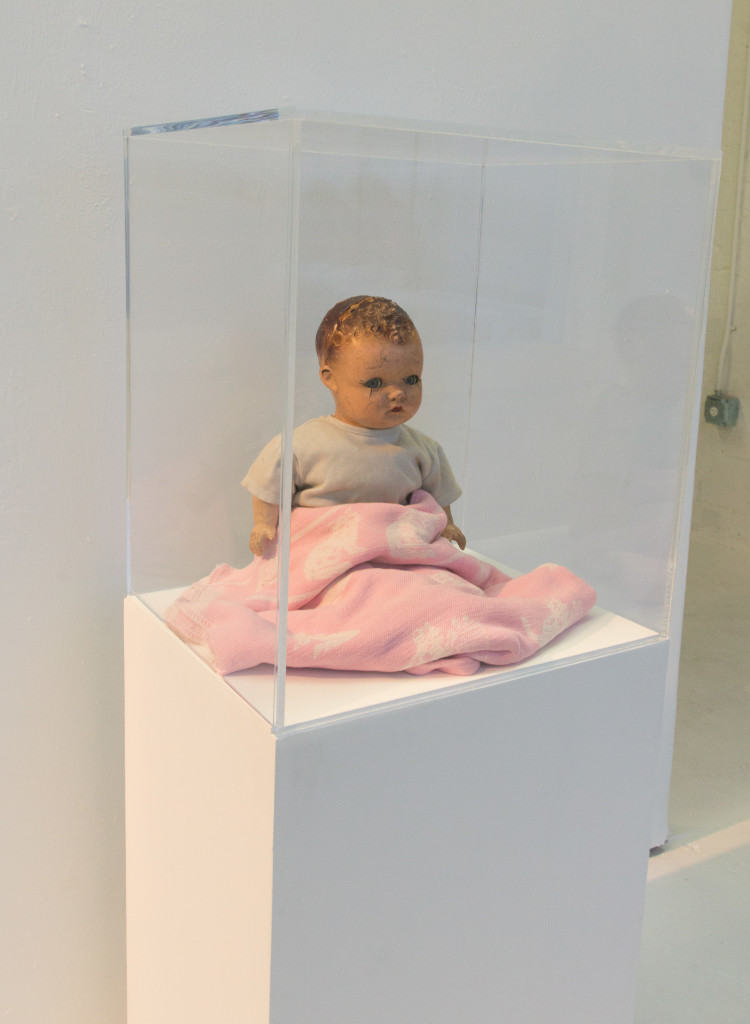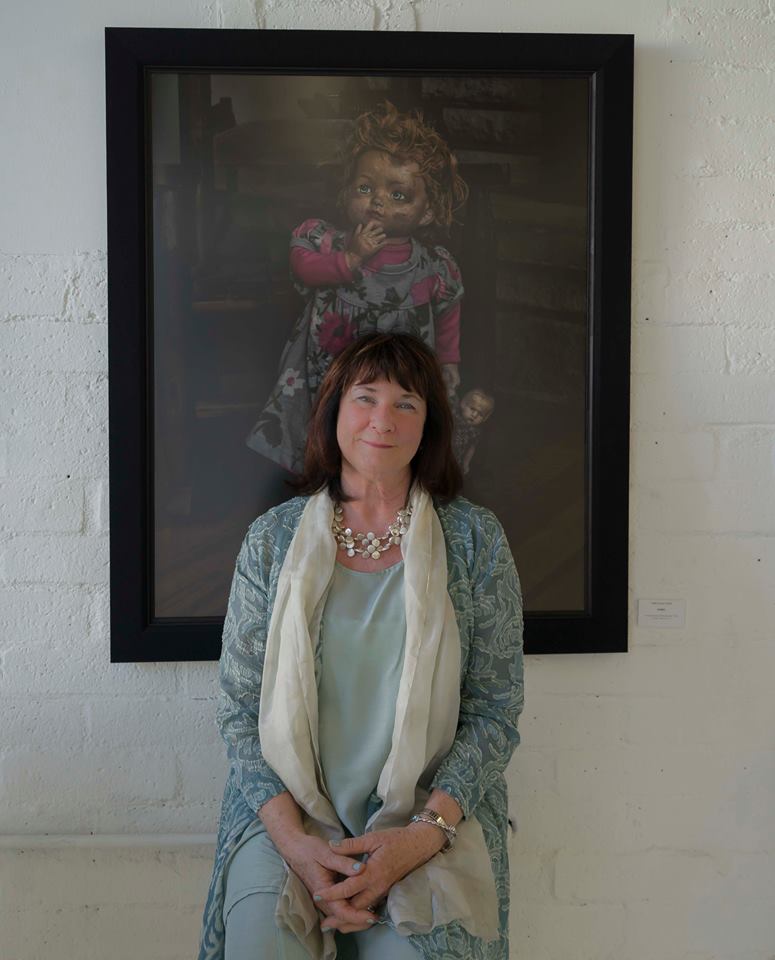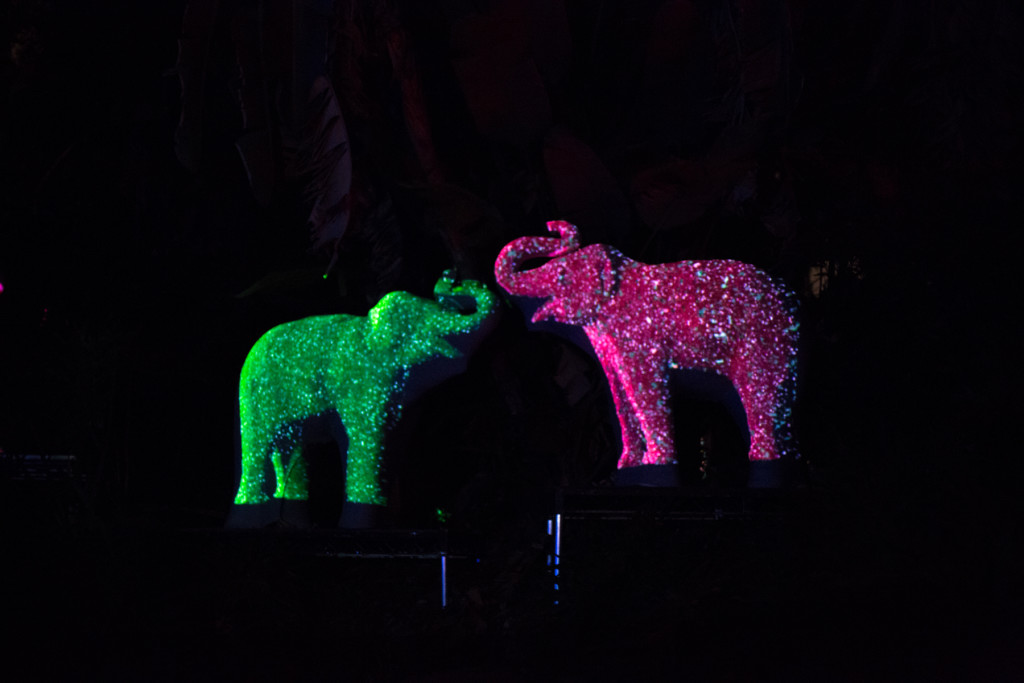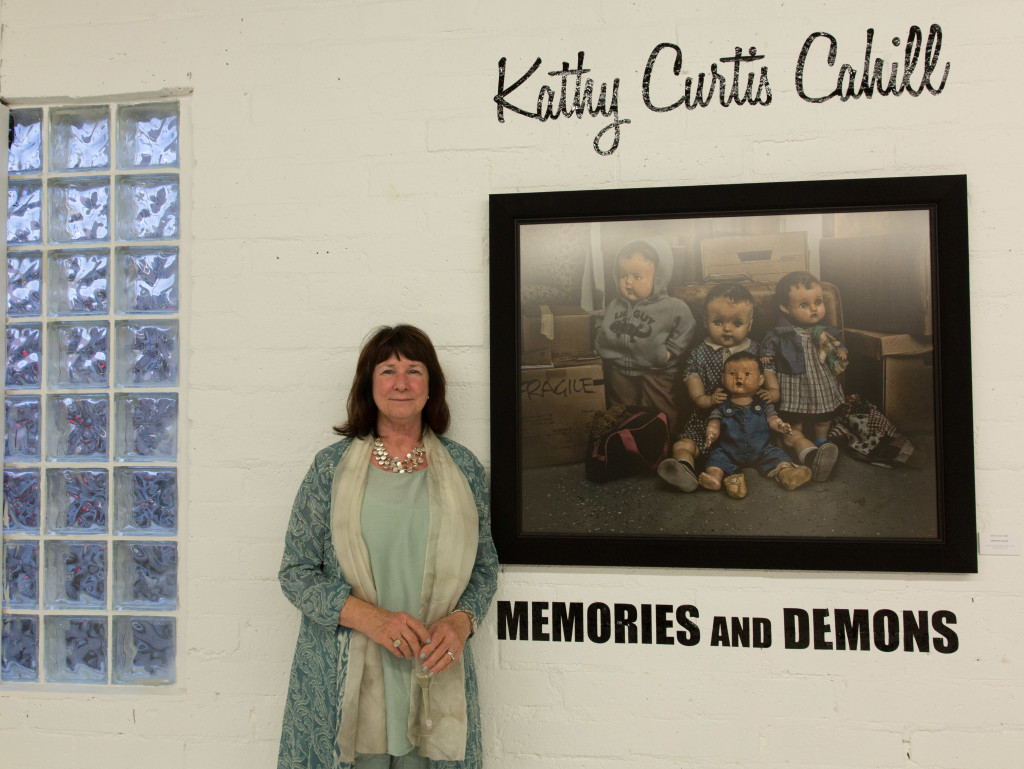
A harrowing childhood led photographer Kathy Curtis Cahill to the presentation of a world that’s as wonderful and inspiring as it is frightening and mysterious. Her life and her art are both dedicated to a singular mission, an “educational process” revealing “how fragile young children are, and how everything matters in the home environment,” Cahill explains.
Her most recent exhibition, “Memories and Demons,” held at the Artists Corner Gallery in Hollywood this past summer, and her current work, both express this mission beautifully.
Her work was inspired by her difficult childhood with a volatile, often violent who physically abused her, her siblings, and her mother and her parents’ toxic co-dependent relationship. Cahill says she spent a long time getting over being angry, but her work provides closure and catharsis. Vivid and insightful, her luminous and haunting photographs revolve around realistic looking antique dolls, whose often chipped and cracked visages are positioned to be startlingly lifelike, and eerily symbolic of the daily narrative of Cahill’s early life. “Child abusers will not leave you unscathed,” Cahill notes.
The path to the artist’s own self-awareness began with therapy, and the painful process of examining her childhood to uncover who she was in the present. Controlling her own self-directed anger and destructive impulses led her to move from the position of an aggressor and victim to that of a victor, she relates.
“As I began to understand the long-lasting effects of being raised in a violent, angry, male- dominated household, I realized I wasn’t alone in this kind of background. The death of my parents opened a dialogue with my siblings about our shared experiences, the ones that remain painful,” she says.
Cahill was determined to raise awareness about the vulnerability of children. “Children are very aware, but what they are not able to do is emotionally cope with what they know and are powerless to change. I used this knowledge to create photographic portraits of many of my childhood memories, and those of others with similar upbringings, who were generous enough to let me illustrate their stories.”
Educated as an art teacher, Cahill was an Emmy nominated film and television set decorator for over thirty years. Retired in 2011, her entertainment industry work nurtured her skills in shaping a continuing, non-verbal story – skills she uses in her art, with dolls serving as stand-ins for the children they depict.
“I’ve always been involved in art and photography. I have been inspired greatly by Diane Arbus and Sally Mann”, she says. The dolls came later, the outgrowth of an antique doll collection, and an intimate connection with the dolls themselves. “I used older style dolls with cloth bodies to represent the very young in situations that portray sad and painful memories. The aged, cracked patina of their faces signifies the trauma and scars they endure, and their expressions gave me a starting point for their stories.”
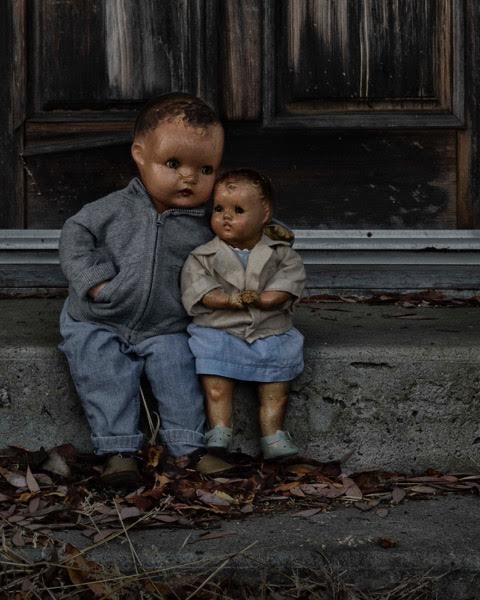
As her subjects, the dolls’ electrify viewers with their poignant and life-like expressions and positions. Working entirely on her own, Cahill has been creating her unique vision for just over a year, relying on minimal but natural settings and natural light to create miniature sets, often making many of the dolls’ costumes and props. She shapes a realistic yet surreal style that pulls viewers into an alternate but all-too-real and painful world. Loss, longing, and a capacity for hope and awe pull at the eye and heart in her work, from her very first piece, “Small Comforts,” inspired directly by her older brother. Her narrative photographs were often shot as many as one hundred times to accurately narrate the emotional mutilation of an abusive childhood.
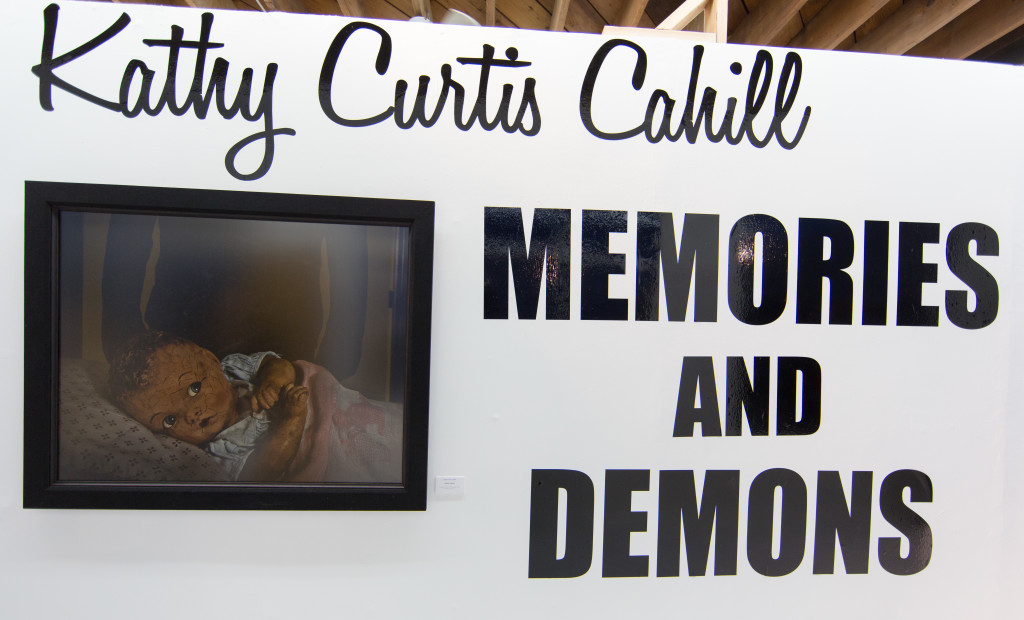
She compels viewers to shape their own personal stories and memories through her evocative work. Without human subjects, the focus of her photographs becomes universal, and thus intensely personal, to each viewer.
“I make these pieces for all the children who were traumatized, for children who are still affected as adults by what has happened in the past. I tell stories in images that children may not be able to tell in words,” Cahill says. “There is universality to the wounds that young people feel, wounds that can haunt them forever.”
- Genie Davis; Photos: Jack Burke, Shoebox PR, Kathy Cahill



